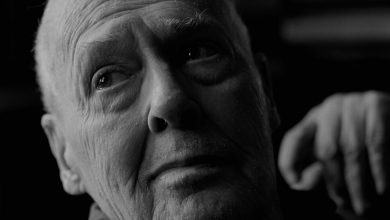The Deadly Red Tape of Israel’s Occupation in Palestine

A DAY IN THE LIFE OF ABED SALAMA: Anatomy of a Jerusalem Tragedy, by Nathan Thrall
On a rainy, windy morning in February 2012, on a highway outside of Jerusalem, an 18-wheeler collided with a school bus filled with kindergartners and their teachers. The bus rolled over and landed on its side, door-side down, and burst into flames. One teacher and six children died. Some of the survivors were so badly burned that a local man who broke a window and climbed into the bus to pull the children out couldn’t recognize them as human.
The passengers were Palestinian, as was the truck driver. Unlike them, however, he held a coveted blue ID, a kind of passport that allows for greater freedom of movement in and around Jerusalem.
The crash could have driven a few headlines, read and soon forgotten, if not for “A Day in the Life of Abed Salama,” a searing 2021 piece in The New York Review of Books by the Jerusalem-based journalist Nathan Thrall. The article follows a Palestinian man named Abed Salama whose 5-year-old son, Milad, was on the bus. By the time Abed reaches the site of the accident, the children have already been rushed to hospitals by helpful good Samaritans and United Nations health workers who chanced upon the crash. Abed must decide how to search for his son, but given his particular identity card, his options are limited.
Now, Thrall has expanded the story into a book by the same name. Much as he did two years ago, he weaves scenes from the aftermath of the accident with passages of historical context that explain the physical and legal boundaries that shape the lives of Palestinians living in East Jerusalem.
But Thrall also widens his scope, stretching his account over decades, beginning with the first time Abed fell in love. We see bits of life that often get muted by the Manichaean lens through which the conflict between Israel and Palestine is often perceived — a failed marriage, drug-dealing neighbors and personal rivalries. All this extra context shifts the gravitational pull of the story of the accident ever so slightly, making it possible to examine not just the aftermath, but also the individual and political decisions that preceded it.
Tragedy often raises torturous, obsessive questions that can transcend the bounds of reason: Could it all have been different if one had done this or that instead? Thrall ends the prologue with this sentiment, as Abed rushes toward a hospital in the West Bank city of Ramallah. “Am I being punished for what I did to Asmahan?” he wonders, almost karmically, of the way things ended with his first wife. The painful dissolution of their marriage propels Thrall’s narrative in the first third of the book.
While Abed’s guilt goes back decades, other characters in the book remember more immediate choices: They hesitated before sending their kids out or getting on the road themselves that dreary February morning — they had never seen such terrible rain. Then there is the fact, which emerged after the crash, that the transportation company the school hired used a bus that was old and illegally registered.
These vignettes of individual guilt come up against stark political realities. As Thrall explains, many Palestinians in East Jerusalem like Abed send their children to unregulated private schools because the public ones are overfilled and drug use is high in U.N.-run schools. The road the bus had been going down had been paved so that settlers could travel to and from Jerusalem without having to go through Ramallah, creating “the illusion of a continuous Jewish presence from the city to the settlements.” After Israel built new bypass highways for settlers, most of the drivers who used the old road were Palestinian. These Palestinian motorists were stopped at checkpoints, which meant traffic piled up, which meant that, to escape the bottleneck of cars and trucks, drivers had a habit of overtaking slow-moving vehicles by veering into the opposing lane of traffic.
And then there is one particular detail about the accident that continues to chill me. The bus is “crackling with flames.” There are screams and shouting. The children burn inside. The crash happened a few minutes’ drive away from a settlement and seconds from a checkpoint. An Israeli ambulance could have bypassed the checkpoints and taken a direct route to the scene of the accident. But about half an hour in, Thrall writes, “not a single firefighter, police officer or soldier had come.”
One starts to question whether the tragic accident is a failure of bureaucracy or, instead, whether it is the bureaucracy. Politics is not just elections and war. It is also neglected infrastructure, separate roads, suspicious soldiers. How much do individual choices matter under a system that determines the daily routines, the course of one’s life and even one’s death?
Thrall is one of the few writers who can combine vivid storytelling with in-depth analysis of the occupation without resorting to political throat-clearing, and throughout the book he maintains an unwavering, cleareyed focus on the broken political system. His view of the occupation is long: This is his second book on a subject he has covered for more than a decade. He is an authority on the history of the border wall and the politicians who intentionally built “apartheid roads,” and his expertise allows him to shuttle nimbly between the viewpoints of frantic families and Palestinian leaders as well as Israeli officials and nearby settlers.
At times, the book can feel repetitive, especially when Thrall restarts the day from various vantage points. In the second half, we lose the thread on Abed as Thrall takes us into the lives of other parents desperately searching for their children. But the images that flash in these parents’ minds — the Spider-Man backpack, the chocolate milk — are powerful testaments to the basic fact that it was children who died.
Thrall’s book forces readers to focus on a difficult and yet obvious fact: Young Palestinians are intractably tangled up in an enduring conflict. Every year, the Israeli military court sentences hundreds of children to prison time for throwing stones, many of them 12 to 15 years old. As Thrall notes, “The damage wasn’t only to the affected families, each of them grieving lost years and lost childhoods. It was to the entire society, to every mother, father and grandparent, all of whom knew or would come to learn that they were powerless to protect their children.”
Perhaps someone who is arrested by the military is not a child in the eyes of the Israeli state or even the American one that supports it. But what about a 5-year-old kid? How is he seen by everyday citizens? Not long after the accident, young Israelis responded to the news in a slew of Facebook posts and comments: “It’s just a bus full of Palestinians. No big deal. Too bad more didn’t die,” read one. “Great! Fewer terrorists!!!” read another.The Israeli television reporter Arik Weiss tracked down some of the commentators, who turned out to be teenagers. “How the hell did we get here?” he wondered.
This glimpse at the deadly cynicism of the young (and by now, grown-up) people who will become Israel’s soldiers and leaders is the larger tragedy the book encompasses. One way to start to answer Weiss’s question is to examine the apartheid system that intentionally divides Israelis and Palestinians, as Thrall does so convincingly in this grim narrative. It is, unfortunately, a reality that the U.S. government is not yet willing to address.
A DAY IN THE LIFE OF ABED SALAMA: Anatomy of a Jerusalem Tragedy | By Nathan Thrall | Illustrated | 255 pp. | Metropolitan Books | $29.99





